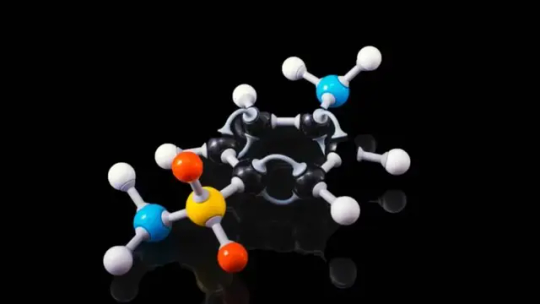#uw-madison
Text
Archives Can Be Festive Too!
by Bailey Watson, LGBTQ+ Student Processing Assistant
12/22/2023
As the holiday season is upon us, we would like to showcase just some of our holiday ornaments from across many collections. This selection comes from the Wagner Button Collection (2015/316, 2017/274) in the LGBTQ+ Archives. There are a handful of holiday ornaments in this collection, most are Pride-themed. We hope these brightly colored ornaments will bring festive cheer to the dreariness of the last few days! Have a happy winter break!

19 notes
·
View notes
Text

5 notes
·
View notes
Text
Super fucking cool research at my alma mater.
0 notes
Text
UW-Madison launches new initiative to train more pharmacists from around Wisconsin
The initiative offers high school seniors and first-semester freshmen at UW System universities an assurance they'll be admitted to the flagship's Doctor of Pharmacy program.
By Rich Kremer | Wisconsin Public Radio
The University of Wisconsin-Madison has launched a new effort to train more pharmacists from around the state. The initiative offers high school seniors and first-semester freshmen at UW System universities an assurance they’ll be admitted to the flagship’s Doctor of Pharmacy program.
Pharmacists don’t just work at retail drugstores, said UW-Madison…

View On WordPress
0 notes
Text
Catalisi chimica a temperatura ambiente per risparmiare energia

Scoperta a livello atomico può cambiare il mondo del petrolio e della chimica. Gli ingegneri chimici dell’Università del Wisconsin-Madison hanno sviluppato un modello di funzionamento delle reazioni catalitiche su scala atomica. Si tratta di un progresso considerato una svolta nella ricerca sulla chimica computazionale. La comprensione potrebbe consentire a ingegneri e chimici di sviluppare catalizzatori più efficienti e di mettere a punto i processi industriali – potenzialmente con enormi risparmi energetici, dato che il 90% dei prodotti che incontriamo nella nostra vita sono prodotti, almeno in parte, attraverso la catalisi.
Il team ha pubblicato la notizia del loro progresso sulla rivista Science. I materiali catalitici accelerano le reazioni chimiche senza subire essi stessi cambiamenti. Sono fondamentali per la raffinazione dei prodotti petroliferi e per la produzione di prodotti farmaceutici, plastiche, additivi alimentari, fertilizzanti, carburanti verdi, prodotti chimici industriali e molto altro. Due brevi filmati sono disponibili in un file zip a questo link della pagina Science abstract.

Scienziati e ingegneri hanno trascorso decenni a mettere a punto le reazioni catalitiche; però, poiché attualmente non è possibile osservare direttamente tali reazioni alle temperature e alle pressioni estreme spesso coinvolte nella catalisi su scala industriale, non si sa esattamente cosa avvenga su scala nanometrica e atomica. Si sa cosa entra, cosa esce, ma non esattamente le singole operazioni a livello atomico. Questa nuova ricerca aiuta a svelare questo mistero, con potenziali importanti ramificazioni per l’industria. Infatti, solo tre reazioni catalitiche – il reforming del metano a vapore per produrre idrogeno, la sintesi dell’ammoniaca per produrre fertilizzanti e la sintesi del metanolo – utilizzano quasi il 10% dell’energia mondiale.
Manos Mavrikakis, professore di ingegneria chimica e biologica presso l’UW-Madison, che ha guidato la ricerca, ha dichiarato: “Se si riducono di pochi gradi le temperature a cui si svolgono queste reazioni, si ottiene un’enorme diminuzione della domanda di energia che oggi l’umanità deve affrontare. Diminuendo il fabbisogno energetico per far funzionare tutti questi processi, si riduce anche la loro impronta ambientale”.
Mavrikakis e i ricercatori post-dottorato Lang Xu e Konstantinos G. Papanikolaou, insieme alla studentessa Lisa Je, hanno sviluppato e utilizzato potenti tecniche di modellazione per simulare le reazioni catalitiche su scala atomica. Per questo studio, hanno esaminato le reazioni che coinvolgono i catalizzatori di metalli di transizione in forma di nanoparticelle, che includono elementi come il platino, il palladio, il rodio, il rame, il nichel e altri importanti per l’industria e l’energia verde.
Secondo l’attuale modello di superficie rigida della catalisi, gli atomi strettamente impacchettati dei catalizzatori di metalli di transizione forniscono una superficie 2D a cui i reagenti chimici aderiscono e partecipano alle reazioni. Quando si applica una pressione e un calore o un’elettricità sufficienti, i legami tra gli atomi dei reagenti chimici si rompono, permettendo ai frammenti di ricombinarsi in nuovi prodotti chimici.
Mavrikakis ha spiegato: “L’ipotesi prevalente è che questi atomi metallici siano fortemente legati tra loro e forniscano semplicemente dei ‘punti di atterraggio’ per i reagenti. L’ipotesi di tutti è che i legami metallo-metallo rimangano intatti durante le reazioni che catalizzano. Per la prima volta, quindi, ci siamo posti la domanda: “L’energia necessaria per rompere i legami nei reagenti potrebbe essere di entità simile all’energia necessaria per rompere i legami all’interno del catalizzatore?””.
Secondo la modellazione di Mavrikakis, la risposta è sì. L’energia necessaria per lo svolgimento di molti processi catalitici è sufficiente per rompere i legami e consentire a singoli atomi di metallo (noti come adatomi) di liberarsi e iniziare a viaggiare sulla superficie del catalizzatore. Questi adatomi si combinano in cluster, che servono come siti sul catalizzatore dove le reazioni chimiche possono avvenire molto più facilmente rispetto alla superficie rigida originale del catalizzatore.
Utilizzando una serie di calcoli speciali, il team ha esaminato le interazioni di importanza industriale tra otto catalizzatori di metalli di transizione e 18 reagenti, identificando i livelli di energia e le temperature che possono formare questi piccoli cluster metallici, nonché il numero di atomi in ogni cluster, che può anche influenzare drasticamente i tassi di reazione.
I loro collaboratori sperimentali dell’Università della California, Berkeley, hanno utilizzato la microscopia a scansione tunneling a risoluzione atomica per osservare l’assorbimento del monossido di carbonio sul nichel (111), una forma cristallina stabile di nichel utile nella catalisi. I loro esperimenti hanno confermato i modelli che mostravano che vari difetti nella struttura del catalizzatore possono anche influenzare il modo in cui i singoli atomi di metallo si liberano e la formazione dei siti di reazione.
Mavrikakis afferma che il nuovo quadro sta mettendo in discussione le fondamenta del modo in cui i ricercatori comprendono la catalisi e il modo in cui si svolge. Potrebbe applicarsi anche ad altri catalizzatori non metallici, cosa che studierà in futuro. È anche rilevante per la comprensione di altri fenomeni importanti, come la corrosione e la tribologia, o l’interazione delle superfici in movimento.
“Stiamo rivedendo alcuni presupposti ben consolidati per capire come funzionano i catalizzatori e, più in generale, come le molecole interagiscono con i solidi”, ha detto Mavrikakis.
Il successo di questa ricerca può rivoluzionare tutti i processi chimici, perché permette di calcolare con precisione l’energia da utilizzare e di ottimizzarlo. Chi riuscirà a sfruttare meglio questa conoscenza avrà un vantaggio competitivo notevole, mentre si prospetta un calo significativo del costo di un insieme di prodotti chimici di sintesi.
Read the full article
0 notes
Text
Jim Leonhard announces departure from UW-Madison football program
Jim Leonhard announces departure from UW-Madison football program
MADISON, Wis. (WMTV) – UW-Madison Defensive Coordinator and former Interim Head Coach Jim Leonhard announced Tuesday that he would be leaving the Badgers at the end of the season.
In a post on Twitter, Leonhard said that he would stay on as the defensive coordinator through the Guaranteed Rate Bowl against Oklahoma State.
“It has been an honor to coach these young men and thank you to all the…

View On WordPress
0 notes
Text
Apparently there's a pro-Palestine protest at UW, which is awesome! I'd be there if it was happening ten years ago when my dogs were either puppies or didn't exist and I didn't have rabbits. (Who also didn't exist at the time.)
Please don't block the way to the hospitals or the UW Vet clinic. They have anesthesia experts working at that vet and are pretty much the only way in Dane County to get anything that requires anesthesia on an animal with severe heart murmur problems done. So it'd be reaaally bad if somebody loses their pet because they couldn't get them in on time. (Same goes for the hospitals, too.)
7 notes
·
View notes
Text
Memorial Student Union and Picnic Point, University of Wisconsin. Madison, Wisconsin...













8 notes
·
View notes
Text
“omg mark estapa is such a menace”. . . do you KNOW who roman ahcan is? YOU CANT OUTDO THE DOEEEER
#roman ahcan#romanahcan#uw#uw madison#uw hockey#uw madison hockey#umich#umich hockey#last tags just for visibility :]
17 notes
·
View notes
Text
50 Years Ago: APA Removes "Homosexuality" From DSM Diagnoses
Written by Bailey Watson, LGBTQ+ Archive Student Processing Assistant
12/18/2023
December 15, 1973 - By a vote of 5,854 to 3,810, the American Psychiatric Association removes homosexuality from its list of mental disorders in the DSM-II Diagnostic and Statistical Manual of Mental Disorders.
Content advisory: This post discusses the history of homosexuality in Western psychiatry and may contain offensive language or topics.
Last Thursday marked 50 years since the APA (American Psychiatric Association) removed “homosexuality” from its list of mental disorders. This change was made to the DSM-II Diagnostic and Statistical Manual of Mental Disorders (the current edition as of 2023 is the DSM-5-TR). The long history of homosexuality being included with physical and mental disorders dates back to the 19th century with Western European theorists working towards an understanding of same-sex attraction, leading to the coinage of the term “homosexuality” or “homosexual.” While these early theories positioned same-sex attraction or desires as unnatural, other theorists of the same decades aimed to prove that homosexuality was not abnormal but instead a natural variance of human sexuality.

Photo Dr. Franklin Kameny from David Carter papers, Collection no. uac 183, Box 5, Folder 49.
The conversation around homosexuality as a disorder took a turn during the post-WWII period in the United States, during a phenomenon referred to as the “lavender scare.” This period, parallel to the “red scare” was a reaction to the Cold War policies and politics, resulting in the massive purge of homosexuals or suspected homosexuals from the federal government, and even further down to local governments (see here for information on UW-Madison’s history with the gay purges). Similarly, communists and suspected communists were also barred or purged from public service and government-contracted sectors.
In response to these purges, the early gay rights movement, then known as the homophile movement focused on organizing and protesting the conditions that made up the lavender scare. These conditions included the DSM’s classification of homosexuality as a diagnosable disorder. To the early homophile movement, as to some early theorists, homosexuality was perfectly natural, and therefore they could not pose a threat to national security.
One aspect of activism from this period was addressing the DSM's use of homosexuality as a diagnosable disorder. The homophile movement argued that sexuality had no bearing on mental health, and by stigmatizing the gay community, the DSM and APA were adding to the problem. Furthermore, by diagnosing people as "homosexual" the APA created a way to dismiss those voices and placed a barrier on the conversation on who was fit to participate in society freely and who was not.
Finally, in 1973 after years of protest and activism, the influence of activism, including the voice of Dr. Franklin Kameny (pictured above) and internal changes led to a new definition of mental disorder within the APA and thus removed homosexuality from diagnoses. A win for the homophile movement and a change that brought lasting and positive impacts to many people's lives, even 50 years later.
References and for further consideration:
Drescher, Jack. 2015. "Out of DSM: Depathologizing Homosexuality" Behavioral Sciences 5, no. 4: 565-575. https://doi.org/10.3390/bs5040565 (open access)
For more on Kameny and the early homophile movement, explore the David Carter papers, uac 182, located in the Madison LGBTQ+ Archive (housed at the University Archives, Steenbock Library)
#uw-madison#wisconsin#wihistory#madison wi#lgbtqia history#american psychiatric association#archives#university archives
11 notes
·
View notes
Text
According to historians, this is the true reason Black History Month occurs. The shortest month of the year, February
Frederick Douglass
Many wonder why Black History Month falls in February, which is the shortest month of the year. Historians claim there is an easy solution: Black History Month, which started off as Negro History Week in 1926, is observed in February because it falls on the birthdays of Frederick Douglass and President Abraham Lincoln, two significant abolitionists.
Lincoln was born on…

View On WordPress
#Abraham Lincoln#Black History Month#black student strike UW-Madison#carter G. Woodson#Demand Letter#February#Frederick Douglass#Latest#Valentines Day
4 notes
·
View notes
Photo

Van Hise II
Canon FT-QL
Kodak Gold 200
9.XX.2019
#photography#queer artists#35mm#macro#flower#garden#uw madison#madison#wisconsin#filmisnotdead#film#vintage
22 notes
·
View notes
Text
Great Building or Greatest Building?
Okay, I did a TikTok about this, but I'm not going to force you to look at it unless you want to. Instead, regard this photograph of the best building on the UW-Madison campus:


Quick facts:
1/ Built in 1894. The style is called Romanesque Revival or Norman Revival. (The building is definitely more Norman than Roman, right?)
2/ It was actually an armory for quite a long time and was the home of the ROTC program until like 1970. ROTC was compulsory at UW off and on until the 70s.
3/ Because of this, the building was firebombed in January 1970. As far as I can tell, no one was injured, but there was about $20,000 in damage done. (It's unclear if the number is in 1970s dollars or current dollars.)
4/ There was a pool there (male only) that permitted nude swimming until 1973 (when it became co-ed and, presumably, required suits).
5/ Comes up a bit in my novel, although mostly as a landmark/"Ulysses went to the gym" type of thing. I was a little worried about mentioning it, because it's such a weird/cool building I thought people might not believe it if I described how it actually looks. But I did. The Madisonians who have read the novel really liked the hat tip.
6/ It's used for administrative stuff now, but the track (up above where the gymnasium was) is still there.
9 notes
·
View notes
Text
the capital building in Madison was so fun
#UW (Madison) grad students protesting for salary#Pipeline protestors#Toppless pro abortion protestors#All during a farmers market#Great people watching and I got cheese curds
9 notes
·
View notes
Text
i have to be at work at fucking 645 tomorrow morning cus the UW in madison had ANOTHER fackin incident....
#boss: we need all hands on deck can i count on u for this weekend in madison#me: sure! (jokingly:) its not the uw again is it#boss: it is.#BROOOOOO WHAT ARE YALL DOING OVER THERE#imma go bananas if its the same building#we spent months there.... like the hours will be good but#im not looking forward to the 18 hr days...cus its already a 6hr round trip
5 notes
·
View notes
Text
hello I'm trying to figure this out
I actually only came here cos I couldn't remember one person's name but it turns out they're a proshipper???? WHAT. anyways I already made the account 😭
I used to be @ casparsnotonfire which I don't want to tag cos someone took it (I think?) and I can't remember all the other names I had, I think when I deactivated I was @slightly-spooky-socks but either way I was pretty active in the phandom. anyways I'm an adult now so my parents can't control whether or not I have tumblr. might as well find my pals :)
#phandom#casparsnotonfire#please help me find my friends#also now i can say i go to uw madison so if anyone is around here! thatd be cool#i dont remember how tags work#its been five and a half years guys#also life update if i end up finding anyone im on t now#big man vibes
14 notes
·
View notes